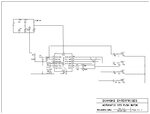Tahmid
Advanced Member level 6
- Joined
- Jun 17, 2008
- Messages
- 4,756
- Helped
- 1,798
- Reputation
- 3,588
- Reaction score
- 1,656
- Trophy points
- 1,413
- Location
- Berkeley, California
- Activity points
- 30,583
For the voltage sensing part, I have two options:
1) Scale down the AC. Convert it to DC. Measure the voltage with microcontroller. This is the peak voltage. So dividing by 1.414 gives me AC RMS voltage. I can do without dividing by just considering the corresponding peak values.
2) Use the microcontroller to calculate the RMS voltage by sensing zero crossing, sampling multiples times and finding the square root of the average of the squares of the samples.
The first method is easier, and since, I'm pretty sure input waveform will always be sine, then I think that should be okay.
1) Scale down the AC. Convert it to DC. Measure the voltage with microcontroller. This is the peak voltage. So dividing by 1.414 gives me AC RMS voltage. I can do without dividing by just considering the corresponding peak values.
2) Use the microcontroller to calculate the RMS voltage by sensing zero crossing, sampling multiples times and finding the square root of the average of the squares of the samples.
The first method is easier, and since, I'm pretty sure input waveform will always be sine, then I think that should be okay.
